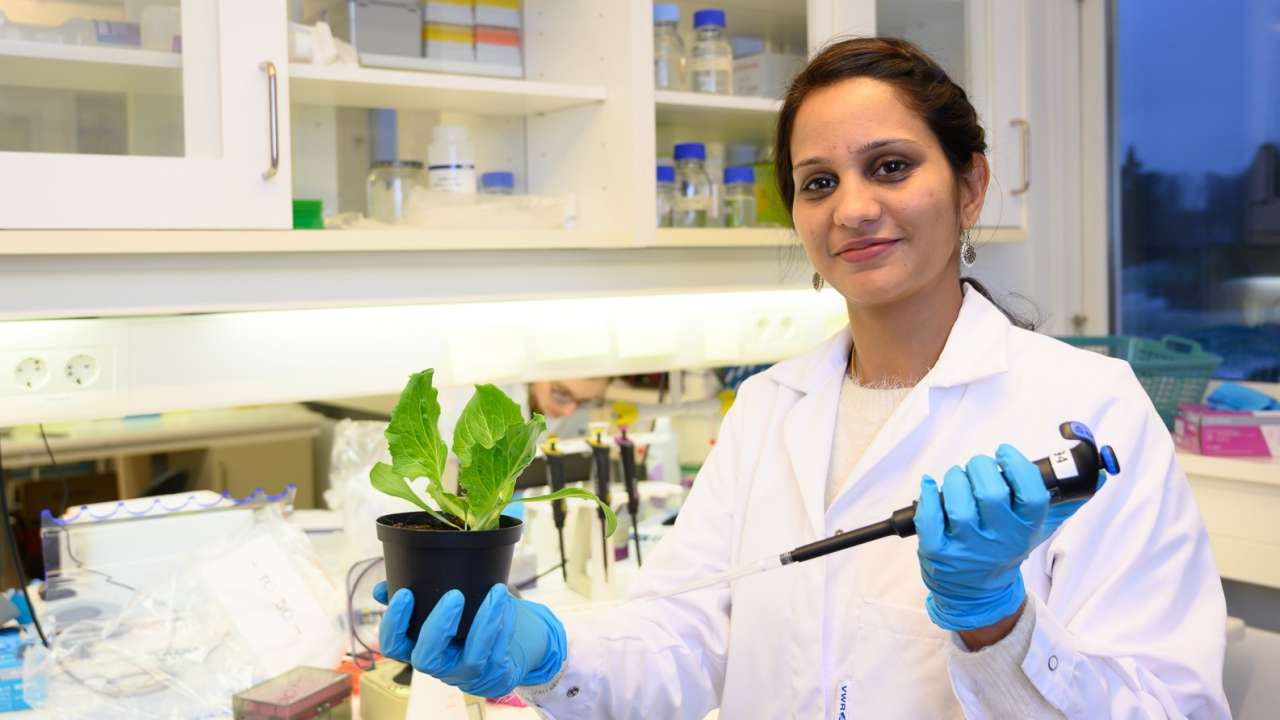Fungus-resistant lettuce using CRISPRtechnology

Senior Engineer Arti Rai at NIBIO.
Photo: Erling Fløistad.
White mold can wreak havoc on lettuce farms, destroying crops and causing financial losses. Now researchers at NIBIO want to use the gene-editing technology CRISPR to develop fungus-resistant iceberg lettuce.
In Norway, sales of iceberg lettuce brings in about 400 m NOK annually. Around 35 percent of that lettuce is produced domestically.
White mold, however, can be a big problem for lettuce farmers. In many areas, this fungus destroys 20-30 percent of crops.
White mold is typically combated using chemical fungicides, but these are not always effective.
As a green alternative to pesticides, researchers at NIBIO are now working with the gene-editing technology CRISPR to develop iceberg lettuce that is resistant to fungi such as white and gray molds.
The researchers are using CRISPR to create small mutations in the genes thought to make the plants susceptible to fungus, so these genes stop working. This is genes that resemble genes with this function in other plants.
“When these ‘susceptibility genes’ are turned off, we expect the plants to be more resistant to fungus. In addition, we are performing our own analysis of which genes are activated or turned off when lettuce plants are infected with fungus,” says Tage Thorstensen, researcher at NIBIO.
Using specialised computer programs, they can calculate the predicted function of the various genes, and thereby identifying new potential susceptibility genes. The genes with the most potential are then selected and deactivated using CRISPR. The genetically-edited plants are then tested for resistance against fungal disease to check whether they are more resistant than non-edited lettuce.
“These edited lettuce plants will be indistinguishable from conventional plants apart from their new fungus-resistant properties. They also contain no genetic material from other species, unlike traditional genetically-modified plants,” Thorstensen explains.
Contacts

Contacts

